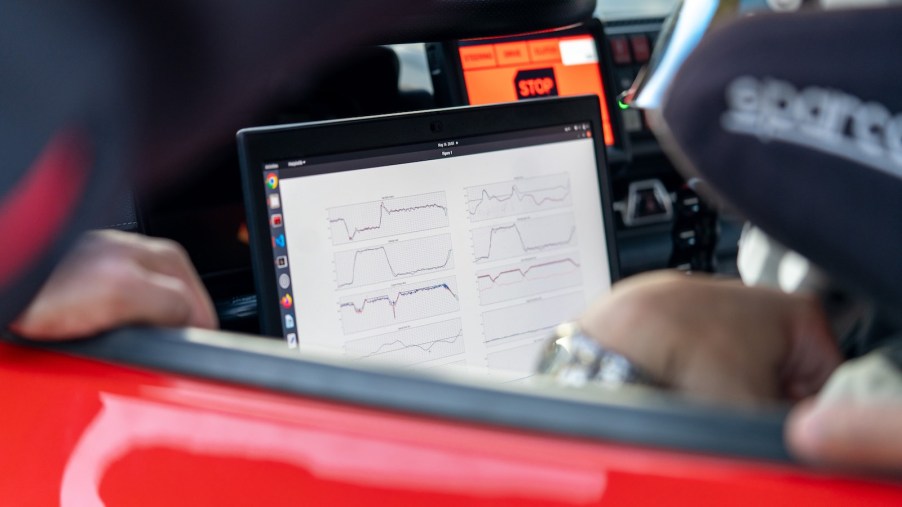
Forget Lane-Keep-Assist, Self-Driving Race Cars Can Now ‘Drift’
I always insist, “Let the kids do donuts.” And by “donuts” I mean racing to the nearest parking lot when it snows to gun the throttle and spin your car in circles. Why? Because this teenage rite of passage requires controlling your car through a skid, which helps you internalize important lessons about driving at the edge of traction. Next time you hydroplane or hit ice, these skills can save your life. And I stand by my argument. But I never expected to see a day when the “kids” are self-driving race cars.
Wait, so what is “drifting?” As those kids who loved doing “donuts” grew up, some invented a form of motorsports in which you control your car through a series of skids. I often say comparing drifting to other motorsports is like comparing figure skating to speed skating. Drift racers are judged on style instead of speed. But they are masters at controlling fast-moving cars in low-traction situations.

In the most difficult event–tandem drift–a lead driver sets a line through every corner and a second driver attempts to follow the line. These two cars often slide around the track, nose-to-bumper, the drivers avoiding a collision with precise adjustments of their accelerators and steering wheels.
“Our researchers came together with one goal in mind – how to make driving safer…Now, utilizing the latest tools in AI, we can drift two cars in tandem autonomously. It is the most complex maneuver in motorsports, and reaching this milestone with autonomy means we can control cars dynamically at the extremes. This has far-reaching implications for building advanced safety systems into future automobiles…When your car begins to skid or slide, you rely solely on your driving skills to avoid colliding with another vehicle, tree, or obstacle. An average driver struggles to manage these extreme circumstances, and a split second can mean the difference between life and death…This new technology can kick in precisely in time to safeguard a driver and manage a loss of control, just as an expert drifter would.”
Avinash Balachandran, vice president of TRI’s Human Interactive Driving division
Years ago, I heard engineers at Stanford were working on a self-driving car that could drift. They actually put together a very cool DeLorean converted to an EV that could drift itself. Then recently, the Toyota Research Institute and Stanford Engineering announced they’d hit an absolutely bonkers milestone: A fully autonomous tandem drift lap.
One thing I find most incredible about this accomplishment is that they weren’t two identical cars set up to run the same course. The lead car was Toyota’s Gazoo Racing Supra running TRI’s autonomous drift car software. The chase car was another Supra. But this one was running Stanford Engineering’s software. Two truly unique “drivers” accomplishing the mission. See the video embedded below or read on to find out what it means for self-driving cars in general.
Why have autonomous cars drift around a track? The same reason you let teenagers do it: to learn to control a car in a skid. Stanford Professor Chris Gerdes, co-director for the Center for Automotive Research, agrees, “The physics of drifting are actually similar to what a car might experience on snow or ice…What we have learned from this autonomous drifting project has already led to new techniques for controlling automated vehicles safely on ice.”
What’s key is the new technology the two teams developed to make this maneuver possible. They needed to write a neural network tire model so the program could learn the current condition of the tires through trial and error. It also needed to learn the changing track. Gerdes added, “The track conditions can change dramatically over a few minutes when the sun goes down…The AI we developed for this project learns from every trip we have taken to the track to handle this variation.”



